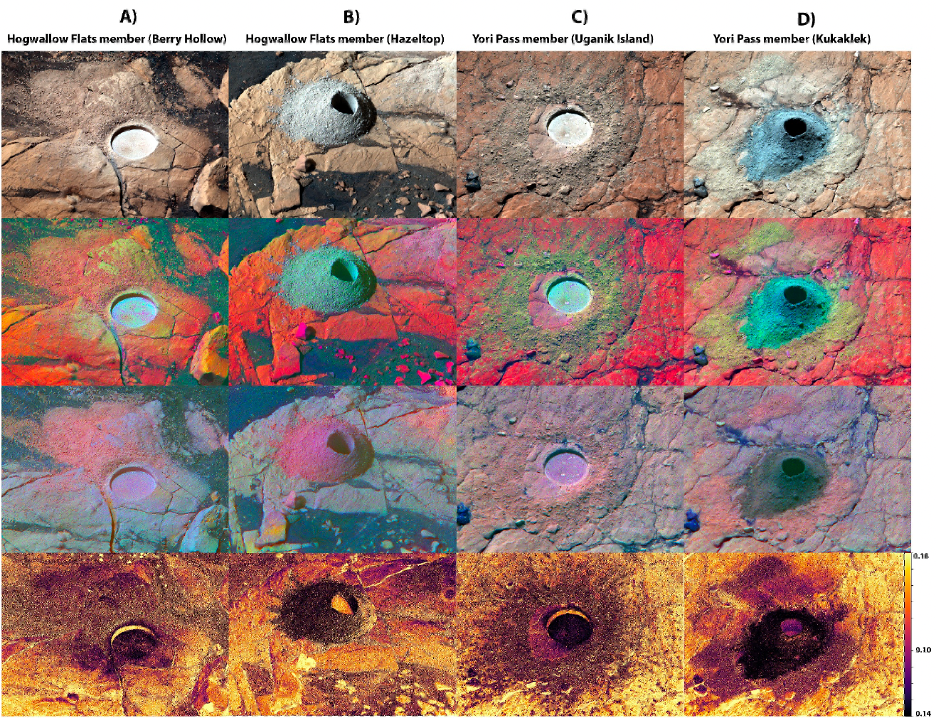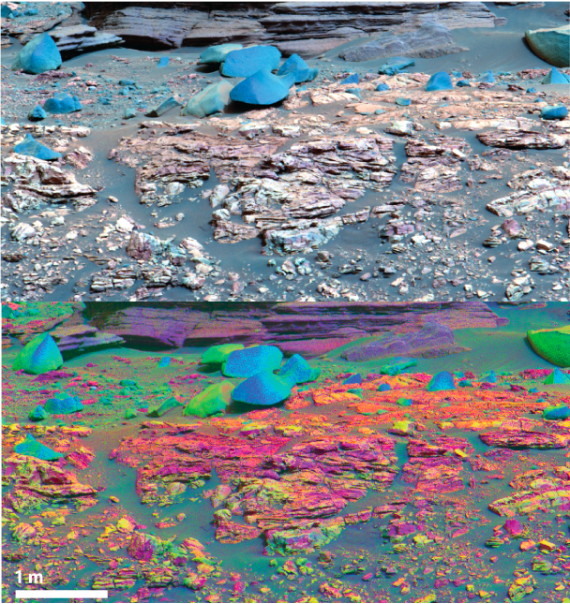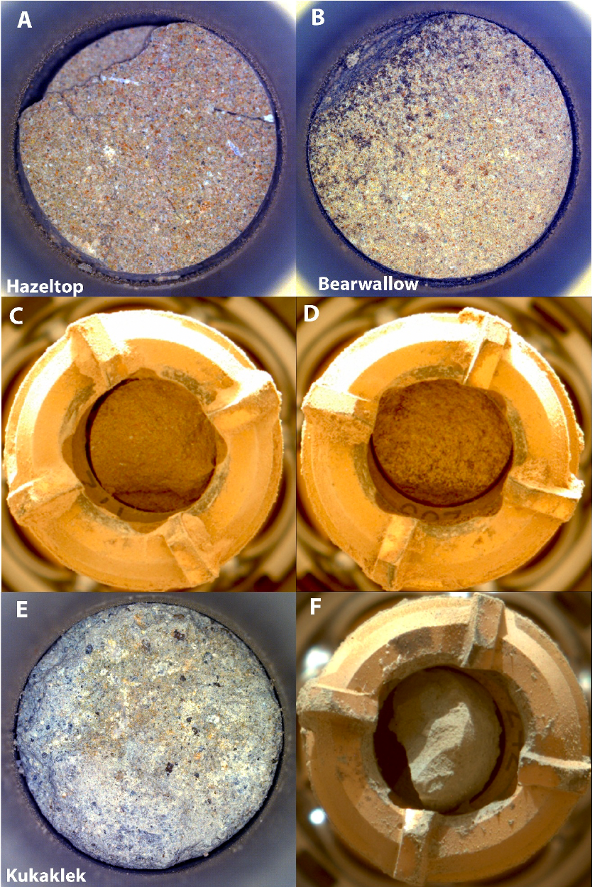Purdue’s Mars team digs up 'Hogwallow' rocks that could hold life’s oldest secrets
04-17-2025

Panorama made of 26 individual pictures taken by Navcam Left camera aboard Perseverance rover on sol 474 (June 20, 2022) at 2:25 pm Martian local time showing tan rock layers of Hogwallow Flats (bottom left and right) and dark, layered blocks from overlying rocks. Sky extended in post-processing (performed by T. Appere). (Photo provided by Adrian Broz)
Scientists from Purdue University have identified a region on Mars that may provide clues about the red planet's potential to have once supported life. Their research focuses on "Hogwallow Flats," a distinct area within the Jezero Crater explored by NASA's Perseverance rover. The study, led by Purdue Postdoctoral Researcher Adrian Broz, has been published in the Journal of Geophysical Research.
The Mars 2020 Perseverance rover was tasked with searching for signs of ancient life in the rock layers within the Jezero Crater, which are roughly 3 to 4 billion years old. It is collecting chalk-sized rock samples from promising areas for future missions to return them to Earth. The Jezero Crater rocks are believed to be from ancient river and delta systems when Mars had liquid water and a habitable surface. In 2023, Perseverance navigated through Hogwallow Flats, notable for its remarkable tan-colored layer of fine-grained sedimentary rocks. At that time, Perseverance collected a total of three rock core samples from these outcrops.

Multispectral observations of abrasion patches and drill core tailings from the Hogwallow Flats and Yori Pass members. (Photo provided by Adrian Broz)
This discovery was made possible through collaboration among many team members, including several from the Department of Earth, Atmospheric, and Planetary Sciences (EAPS) at Purdue University. The research team includes Dr. Adrian Broz, postdoc and lead author, Professor Briony Horgan, co-investigator on the Mastcam-Z instrument onboard Perseverance, and Professor Roger Wiens, principal investigator of the SuperCam instrument. Former Purdue researchers Dr. Clement Royer, now at Université Paris-Saclay, Dr. James Haber, a postdoc with the Smithsonian Institution, and Dr. Brad Garczynski, a postdoc at Western Washington University, also contributed significantly to the study.
“The rocks at Hogwallow Flats represent an environment that might have once been something like a shallow, salty lake (“playa”) or a shallow floodplain (e.g., mudflat) that was periodically flooded with water,” says Broz. “Imagine standing on the shore of a shallow, salty lake, gazing across the horizon as the hot afternoon sun glances with a silvery shimmer on the mirror-like surface, noticing the brilliant hues of salty white minerals that ring around the lakes and crunch beneath your feet when walking along the shoreline. Similar environments can be found in the arid climates of Chile/Peru, California, Arizona, and Canada.”
The team's analysis showed that the Hogwallow Flats rocks contain clay minerals and high amounts of sulfate salts. Both of these factors create extremely conducive environments for preserving residues from ancient life, commonly known as biosignatures. They also discovered a unique mottled layer of red, gray, and purple-colored rock sandwiched between the tan, salty rock layers.

Mastcam‐Z multispectral images showing red-gray-purple mottled colors of rock outcrop at Intricate Bay, Yori Pass member (Sol 621, zcam 03488). Enhanced color (upper panel) is L2 (754 nm), L5 (528 nm), L6(442 nm); Visible wavelength decorrelation stretch (bottom panel) is L2 (754 nm), L5 (528 nm), L6 (442 nm) where magenta hues are associated with materials exhibiting variable states of oxidation and green to blue are ferrous minerals (e.g., olivine, pyroxene). (Photo provided by Adrian Broz)
On Earth, this type of rock often indicates a wet, mucky subsurface typically found below a floodplain or shallow lake. This suggests that the rocks of Hogwallow Flats likely formed when sediments were deposited in a shallow lake or floodplain and later cemented into rocks. Since then, they have been relatively untouched for billions of years. The team concluded that the Hogwallow Flats rock samples are high-priority samples they want to study when the samples return to Earth as part of the Mars Sample Return Mission in the future.
"This work advances our understanding of the ancient climates of Mars when it was most likely to harbor life," Broz said. "It also sets the stage for decades of future research on the returned samples from Hogwallow Flats. Due to space limitations, the Mini-Cooper-sized rover does not carry the instruments needed to confirm with 100% certainty that rocks contain, or do not contain, residues of ancient, fossil life. It is only through the study of returned samples in labs on Earth that a possible detection of life can be confirmed or refuted."

Rock cores collected by Perseverance rover from the Hogwallow Flats and Yori Pass members for Mars Sample Return. The diameter of each rock core is 13 mm. (Photo provided by Adrian Broz)
This research showcases Purdue University's remarkable position as a leading force in Mars exploration. Broz mentions, “Purdue is a powerhouse for Mars research. Professors Horgan and Wiens are among the main connections/arteries to the NASA Mars missions, from which Purdue greatly benefits as a whole.”
Broz highlighted the importance of grasping how planetary processes are interconnected. "My research seeks to understand the origin and evolution of life on Earth, as well as to investigate the possibility for life to have existed on the surface of Mars billions of years ago," says Broz. "The connected influence of physical, chemical, and biological processes acting upon the surface of the Earth is nothing short of remarkable. Simmered down to its essence, this is what drives my desire to study the natural world. This work advances our understanding of the ancient climates of Mars when it was most likely to harbor microbial life. It also sets the stage for decades of future research on the returned sample cores from Hogwallow Flats.”
This research was funded by a NASA contract NNH13ZDA018O for SuperCam (Wiens, Royer); SuperCam (1532432), Mastcam-Z (15-707, 1511125) (Horgan, Broz); Spanish Agency for Research AEI/MCIN/FEDER, Grant No. PID2022-142750OB-I00 (Madariaga); NASA RSS Participating Scientist grant 80NSSC20K0239 (Hausrath). A portion of this research was carried out at the Jet Propulsion Laboratory, California Institute of Technology, under a contract with the National Aeronautics and Space Administration (80NM0018D0004).
About the Department of Earth, Atmospheric, and Planetary Sciences at Purdue University
The Department of Earth, Atmospheric, and Planetary Sciences (EAPS) combines four of Purdue’s most interdisciplinary programs: Geology & Geophysics, Environmental Sciences, Atmospheric Sciences, and Planetary Sciences. EAPS conducts world-class research, educates undergraduate and graduate students, and provides our college, university, state and country with the information necessary to understand the world and universe around us. Our research is globally recognized, our students are highly valued by graduate schools, employers, and our alumni continue to make significant contributions in academia, industry, and federal and state government.
Written by: David Siple, Communications Specialist, in the Department of Earth, Atmospheric, and Planetary Sciences (EAPS) at Purdue University.
Contributions by: Dr. Adrian Broz, postdoc with the Department of Earth, Atmospheric, and Planetary Sciences (EAPS) at Purdue University.